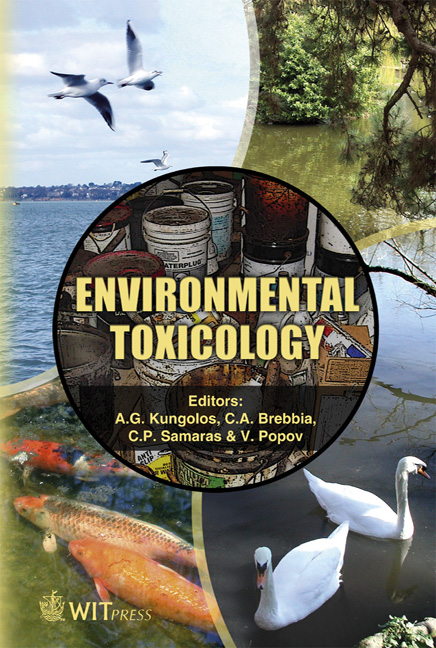Use Of Urinary Porphyrin Profiles As An Early Warning Biomarker For Monomethylarsonous Acid (MMA III ) Exposure
Price
Free (open access)
Transaction
Volume
10
Pages
9
Published
2006
Size
389 kb
Paper DOI
10.2495/ETOX060191
Copyright
WIT Press
Author(s)
M. Krishnamohan, S.-H. Huang, R. Maddalena, J.-P. Wang, P. Lam, J. C. Ng & M. R. Moore
Abstract
Although it is well known that arsenic is toxic and that Arsenic is carcinogenic, the mechanism underlying this carcinogenesis is unknown. Our laboratories have established a model that produces multi-organ tumours in mice following extended exposure to arsenic in drinking water. Until recently the metabolism of arsenic was thought to be a detoxification process. Recent studies have shown that Monomethylarsonous acid (MMA III ) is the toxic intermediate of arsenic metabolism. It is a more potent cytotoxin and genotoxin than As III and As V , and is believed to be the proximal carcinogen. Exposure to arsenic is known to affect the activity of the enzymes of haem biosynthesis. We evaluated the use of urinary porphyrin profiles as an early warning biomarker for arsenic carcinogenicity. Young female mice were given drinking water containing arsenic as MMA III ad libitum. 24h urine samples were collected at various time intervals for up to 48 weeks for urinary arsenic accumulation by HPLC-ICPMS and urinary porphyrin measurement by HPLC. Dimethylarsinic acid (DMA V ) was the major metabolite excreted and it showed significant dose-dependent increase at each time point and exposure dependent increase over 48 weeks. Porphyrin levels appeared to be age dependent. The results indicate that the urinary porphyrin concentration has the potential for use as an early warning indicator of chronic arsenic exposure prior to the onset of arsenic carcinogenesis. Keywords: arsenic, porphyrins, haem synthesis, Monomethylarsonous acid, biomarkers, cancer.
Keywords
arsenic, porphyrins, haem synthesis, Monomethylarsonous acid, biomarkers, cancer.





